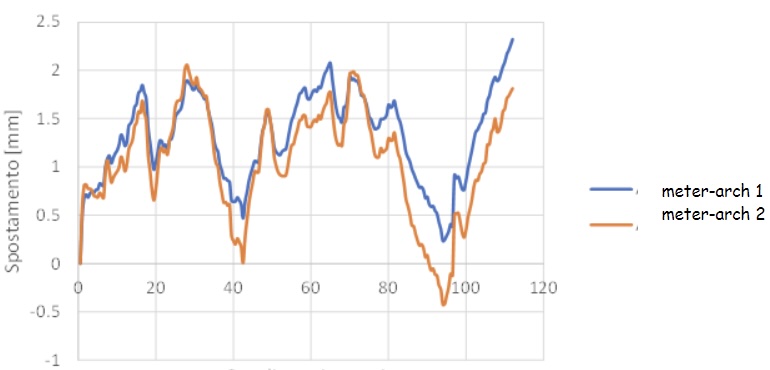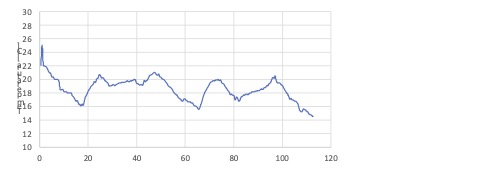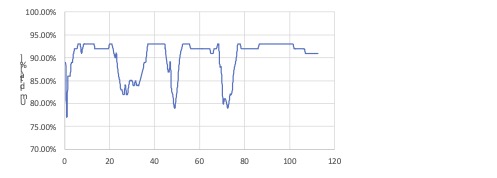The Ninfa Garden is a natural monument located in the territory of the municipality of Cisterna di Latina. It is a typical English garden built in the area of the lost medieval town of Ninfa in the 16th century, of which only a few ruins remain today. After an inspection of the various ruins, it was decided to monitor a long vertical crack located in the entrance area of one of the present towers. Two strain gages and a comparator were used to monitor the crack for a month.
All three devices were shielded and connected to one of two lead-acid batteries sealed in a waterproof plastic box. The box was placed near where the devices were installed.
Unfortunately, one of the three measurement arcs was not installed due to a lack of good network connectivity.
This installation is a first attempt to test the remote control of crack behavior in a cultural heritage site with new types of displacement sensors adapted for this specific use. Since no second set of devices was installed, it was decided to use a single lead-acid battery (6V) to power the machine containing the detection and acquisition system, which stores all the data collected in a micro-SD card, whose data, collected every half hour, are collected and processed at the end of the monitoring.
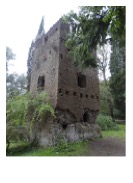
Tower monitored
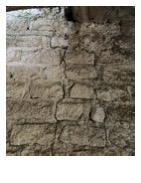
Monitored slit, located on the upper right side from the entrance
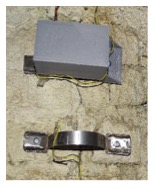
Moni2Bsafe monitoring system instalation.
Inside the tower, a slit was found at the top right of the entrance door. The two metre arches were placed on it: one anchored to the mortar and the other to the tuff bricks. The additional standard digital dial gauge was placed underneath. The control unit, the battery and the comparator screen, which allows the reading of the final displacement data, were placed inside the sealed box and positioned near the slit.
The survey was considered to be a prototype for other subsequent surveys in the park area, in view of the future option of conservation and restoration of some ruins.
Due to its size, the box was difficult to place near the slit. Therefore, further study is useful to define support elements and smaller boxes.
At the end of the installation we can see how the two arcs, the comparator and the hygrometer were placed on the slit. The measurements were carried out for seven days, at the end of which it was possible to study all the data collected.
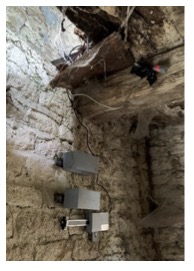
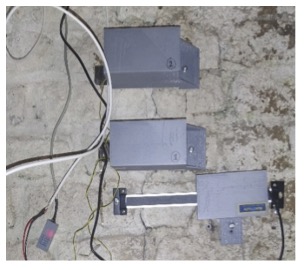
Comprehensive monitoring system
Displacement
Temperature
Humidity
